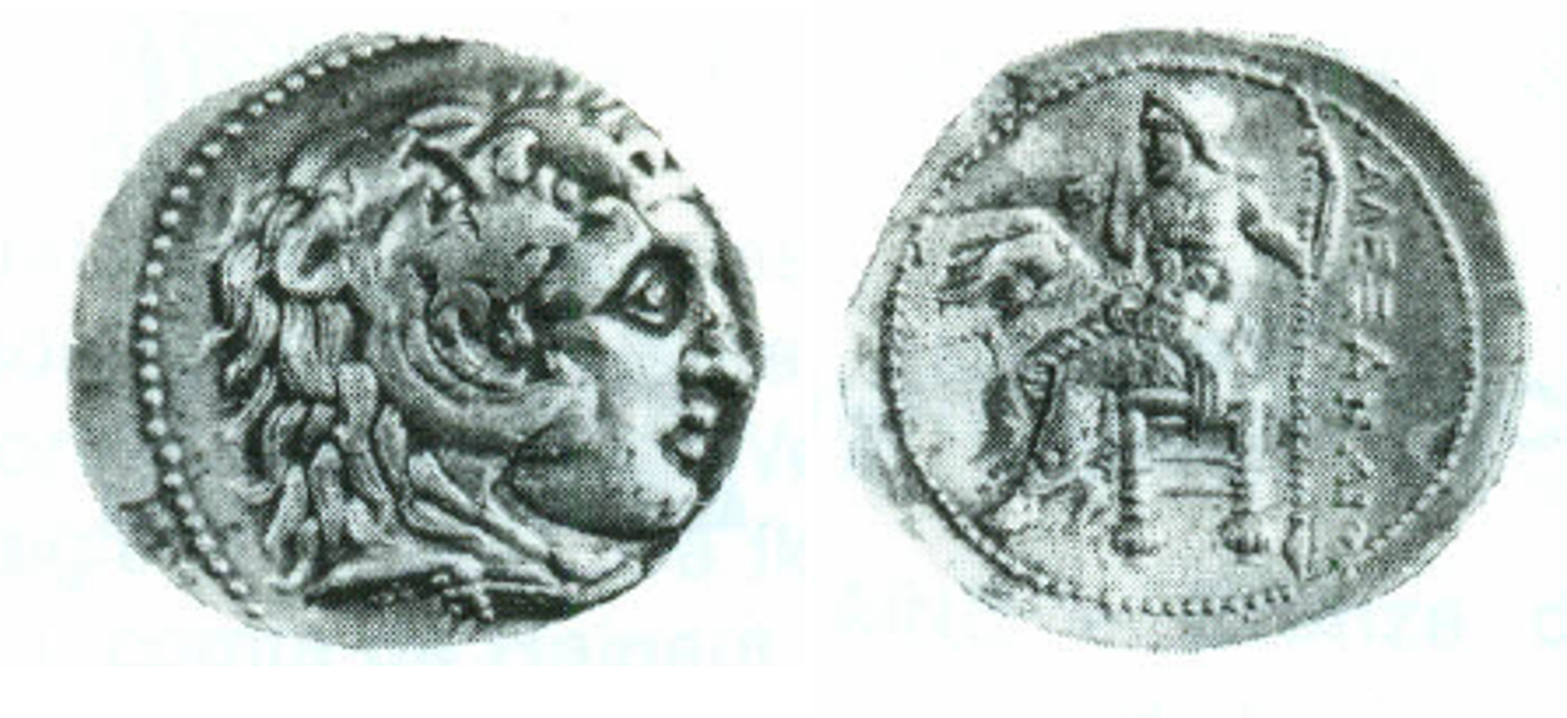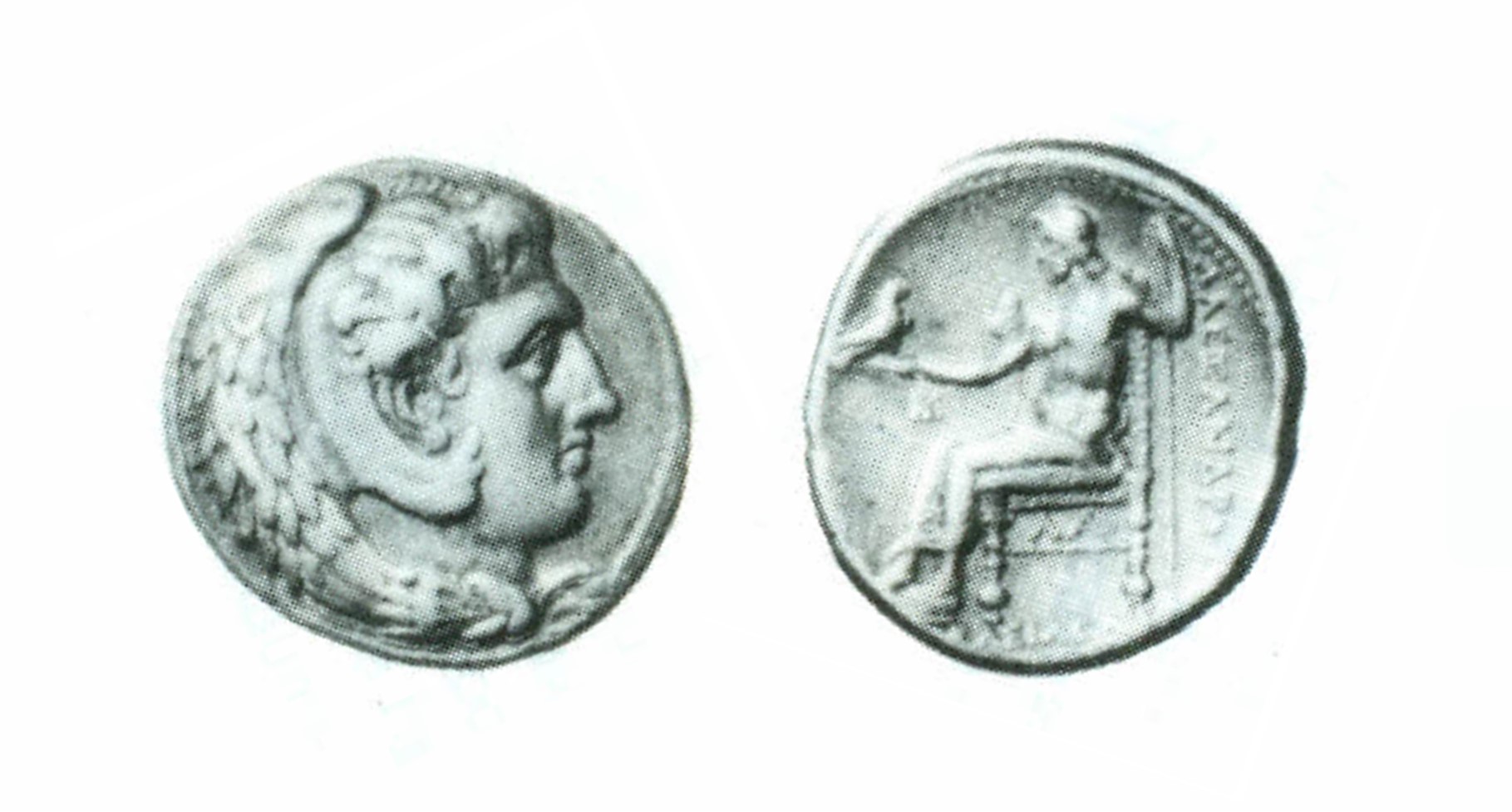309 BCE - 308 BCE | AΛΕΞANΔΡΟΥ
Overstriking coin
Alexander_III, _Kawabiki.png
[1]
Overstruck variety
Alexander_III_Ake_over_Susa.jpg
[2]
Description
| ObverseInscription or printing placed on the obverse.:
|
Head of Herakles right, wearing lion skin headdress. Border of dots.
|
ReverseInscription or printing placed on the reverse.:
|
AΛΕΞANΔΡΟΥ (Greek) Zeus enthroned left, holding eagle and scepter. In left field, date (year 39). Border of dots.
|
Mint and issuing power
| MintIdentifies the place of manufacture or issue of a numismatic object.:
|
Ptolemais-Ake
|
Ancient regionAncient region.
|
Syria (Phoenicia)
|
Modern countryModern country: Israel
|
AuthorityIdentifies the issuing power. The authority can be "pretended" when the name or the portrait of X is on the coin but he/she was not the issuing power. It can also be "uncertain" when there is no mention of X on the coin but he/she was the issuing power according to the historical sources:
|
Alexander III the Great (Argead king, 336-323 BC)
|
Chronology
| FromIdentifies the initial date in a range assigned in a numismatic context. 309 BCE toIdentifies the final date in a range assigned in a numismatic context.. 308 BCE
|
Hellenistic 323-30 BC  periodTime period of the numismatic object. periodTime period of the numismatic object.
|
Physical description
MetalThe physical material (usually metal) from which an object is made.: Silver 
|
|
DenominationTerm indicating the value of a numismatic object. Examples: tetradrachm, chalkous, denarius.: Tetradrachm
|
|
|
|
StandardStandard.: Attic
|
References
Description
| ObverseInscription or printing placed on the obverse.:
|
Head of Herakles right, wearing lion's skin. Border of dots (visible on obverse: profile)
|
ReverseInscription or printing placed on the reverse.:
|
AΛΕΞANΔΡΟΥ (Greek) Zeus enthroned left, holding eagle and scepter. Border of dots (visible on reverse: legs, arm, throne, ΔΑ and monogram)
|
Mint and issuing power
Chronology
| FromIdentifies the initial date in a range assigned in a numismatic context. 320 BCE toIdentifies the final date in a range assigned in a numismatic context.. 316 BCE
|
Hellenistic 323-30 BC  periodTime period of the numismatic object. periodTime period of the numismatic object.
|
Physical description
| DenominationTerm indicating the value of a numismatic object. Examples: tetradrachm, chalkous, denarius. ᵖ:
|
tetradrachm 
|
|
|
References

